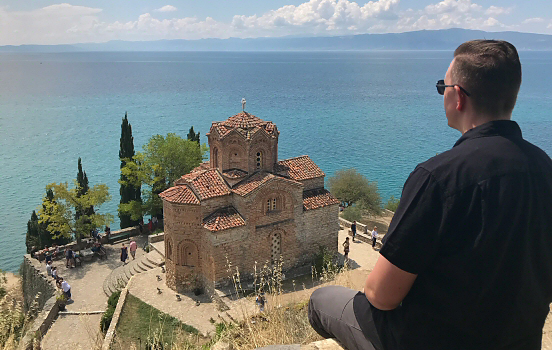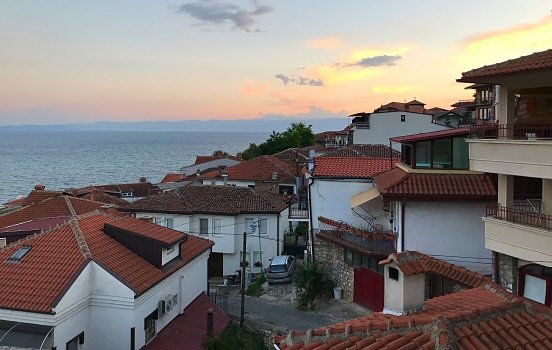There are places that demand your attention with neon signs and cheap cocktails. Ohrid isn’t one of them. Compared to the busy streets of Skopje, the lakeside town of Ohrid is a haven of tranquility.
This isn’t a museum. People live here. They fry up the day’s catch in little taverns along the shore, where Rakia flows like bad decisions and nobody’s in a hurry to bring the check.
Even though Macedonia lacks a proper coastline, wedged in between five surrounding countries, this town still feels like a seaside resort thanks to Lake Ohrid. I take a boat onto the lake and feels instantly at ease, hearing nothing but the sound of the waves.
 A moment of reflection above Sveti Jovan.
A moment of reflection above Sveti Jovan.
Cobbled lanes wind their way past crumbling Ottoman houses and Byzantine churches. There’s a chapel every stone’s throw, as if God himself couldn’t settle on a single view of the lake. And can you blame him?
The poster boy of Ohrid is Sveti Jovan, a 13th century Orthodox church situated on a cliff overlooking Lake Ohrid. I enter the small building, where a baptism was ongoing. But the best reward comes from ascending the small hill behind the chapel to take in the view.
 Sunset over Lake Ohrid.
Sunset over Lake Ohrid.
There are several other sites of archeological interest, such as the hillside Tsar Samuil’s Fortress and the Amphitheatre. I visit both out of sheer interest, but this is a town to slowly discover by strolling along the winding streets, maybe find a nice patio and enjoy the ambience.
That is, until night falls. Suddenly the lights are turned on, locals awaken from their slumber and the entire town turns into a Balkan party, straight from your worst nightmare as if it was directed by Emir Kusturica. It sounds like a hundred drunken monkeys are jamming away at the kitchen utensils. Just when I think that it’s not possible to add another instrument to the mayhem, a clarinet goes to town.

Comments
No comments yet.
Leave a reply